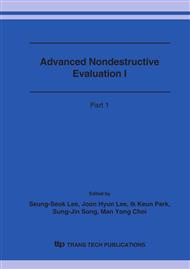p.204
p.208
p.212
p.217
p.223
p.230
p.234
p.240
p.244
Fatigue Reliability Analysis of a Suspension Bridge Using Long-Term Monitoring Data
Abstract:
A method for probabilistic fatigue life assessment of steel bridges by using long-term monitoring data is proposed and applied for fatigue reliability analysis of the suspension Tsing Ma Bridge. In this method, the daily number of cycles for each stress range is obtained from the measured stress history and its probability distribution is estimated based on statistical analysis of long-term measurement data. The statistics obtained for all concerned stress ranges is combined with the S−N relationships stipulated in specifications to conduct a probabilistic assessment of fatigue life with the use of the Palmgren-Miner rule, from which the mean value and standard deviation of the fatigue life as well as the failure probability and reliability index versus fatigue life are obtained. The proposed method is illustrated by using 80-day strain measurement data from the suspension Tsing Ma Bridge which is instrumented with a long-term structural health monitoring system.
Info:
Periodical:
Pages:
223-229
Citation:
Online since:
October 2006
Authors:
Price:
Сopyright:
© 2006 Trans Tech Publications Ltd. All Rights Reserved
Share:
Citation:


